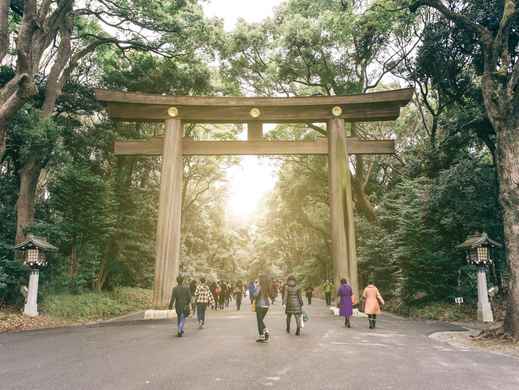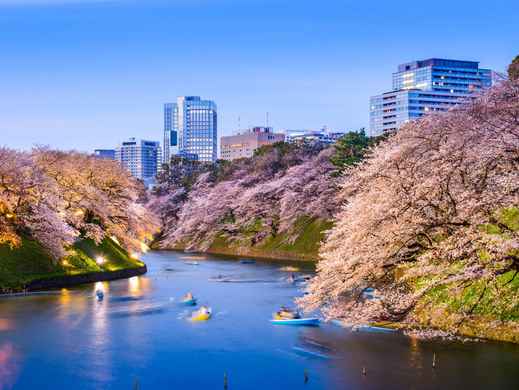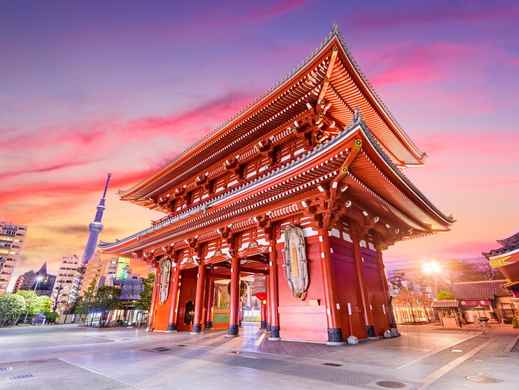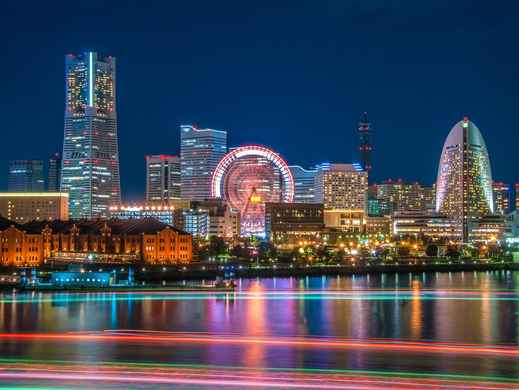


Saitama
Asia
/
Japan
/
Saitama
Located north of Tokyo, Saitama is an underrated destination often overshadowed by its more famous neighbors. Though underrated, this city offers many interesting tourist spots, making it a perfect place for someone looking for an off-the-beaten-path destination in Japan.
One of Saitama’s biggest charms is its rich culture. Omiya Bonsai Village, a sanctuary for bonsai enthusiasts, showcases the intricate artistry of these miniature trees. About one hour from Saitama, the historic Kawagoe district, often referred to as "Little Edo", offers a nostalgic trip to the Edo period through its meticulously preserved merchant houses and streets.
Other tourist spots in Saitama include the impressive Hikawa Shrine, one of Japan's oldest Shinto shrines, and the Akigase Park, which offers you the sight of vast greenery and the blue sky.
Saitama's culinary landscape further enriches its appeal, featuring specialties such as "Soka Senbei" rice crackers and the delicious "Kawagoe Ichiban" sweet potatoes, which offer a taste of the region's culinary heritage. What truly sets Saitama apart is the friendliness of its residents, who proudly share the city's unique offerings, fostering an atmosphere of familiarity.

Explore Saitama
Create your itinerary with our top picks below
Popular Areas in Saitama

Travel Tips for Saitama
What you need to know before traveling here
Getting Around Saitama
A guide to Saitama's local transportation
Saitama is well connected by rail, making it easy for travelers to getting around Saitama. Top options include the JR Saikyo Line, JR Keihin-Tohoku Line, and private rail lines such as the Tobu Tojo Line, which offer easy access to various parts of Saitama. These train lines establish connectivity between the city and Tokyo, as well as the surrounding areas. For travelers who wish to travel from Shinjuku Station in Tokyo to Saitama via the JR Saikyo Line, the journey usually takes about 30 minutes, with a one-way fare of around ¥490.
Practical Tips for Saitama
Things to prepare and best way to visit
Saitama City stands out as a place where local Japanese people maintain close relationships with foreigners. The city is proud of its tradition of respecting and embracing people from different regions.
Saitama is also famous for its bonsai, and there is even an area known as Bonsai Village dedicated to this intricate art form. In addition, Hitsujiyama Park, which is not too far from Saitama City, is famous for its stunning views of moss phlox and the pink flowers that blanket the ground, turning the park into a mesmerizing pink carpet when in full bloom. This creates a stunning visual spectacle, resembling a giant pink carpet covering the ground.
Saitama's food culture revolves around two distinctive staple foods, udon and manju, both of which are rooted in wheat-based traditions. Besides udon and manju, Soka Senbei, a well-made rice cracker, is also famous in Saitama, providing a satisfying blend of sweet and savory flavors.
Adding to Saitama's gastronomic charm is Kawagoe Ichiban, or Sweet Potato, which is a local favorite. Grown locally, these sweet potatoes are enjoyed in many forms, from traditional baked versions to innovative snacks and desserts, demonstrating the region's commitment to culinary diversity.
Saitama is also very proud of its eel cuisine, which features Hitsu-mabushi, a local twist on the classic unagi (eel) dish. Grilled to perfection and served over rice, the dish is served in three stages, offering a unique and enjoyable culinary experience.
Saitama offers a wide variety of activities and attractions for an unforgettable experience. Immerse yourself in the art of bonsai at Omiya Bonsai Village, home to many bonsai nurseries and gardens. Take a leisurely stroll down the bonsai-lined pathways to witness the intricate craftsmanship behind these miniature trees. You can also visit Hikawa Shrine, one of Japan's oldest Shinto shrines, known for its serene atmosphere and traditional rituals, which offer a peaceful retreat.
Another thing to do in Saitama is to explore the historic district of Kawagoe, often called "Little Edo", which features well-preserved Edo-period architecture along Kurazukuri Street. Feel the atmosphere of Japan's historical past, and don't miss the iconic Toki no Kane (Time Bell), a symbol of Kawagoe.
In Saitama, summers are short, warm, humid, rainy and mostly cloudy, while winters are cold and mostly sunny. Throughout the year, temperatures usually range from 0° to 31°C, rarely dropping below -2°C or exceeding 35°F. The ideal time to visit Saitama in Japan is from April to October. During this period, the weather is warm and rainfall is minimal.
Travel time from Tokyo to Saitama depends on the specific location in each area, as Tokyo and Saitama are large prefectures consisting of many cities and districts. If you are traveling from central Tokyo to Omiya in Saitama City, the trip usually takes about 30 to 60 minutes by train. The JR Saikyo Line and other high-speed train services connect these areas efficiently.
If you are going to other cities within Saitama, such as Kawagoe or Chichibu, the travel time can be longer. High-speed trains can cover the distance in the range of 60 to 90 minutes, depending on the destination and train services available.

Get to Know Saitama
Take a tour of this destination's highlights

Explore Saitama

Travel Tips for Saitama

Get to Know Saitama









































 Facebook
Facebook Instagram
Instagram TikTok
TikTok Youtube
Youtube Telegram
Telegram
